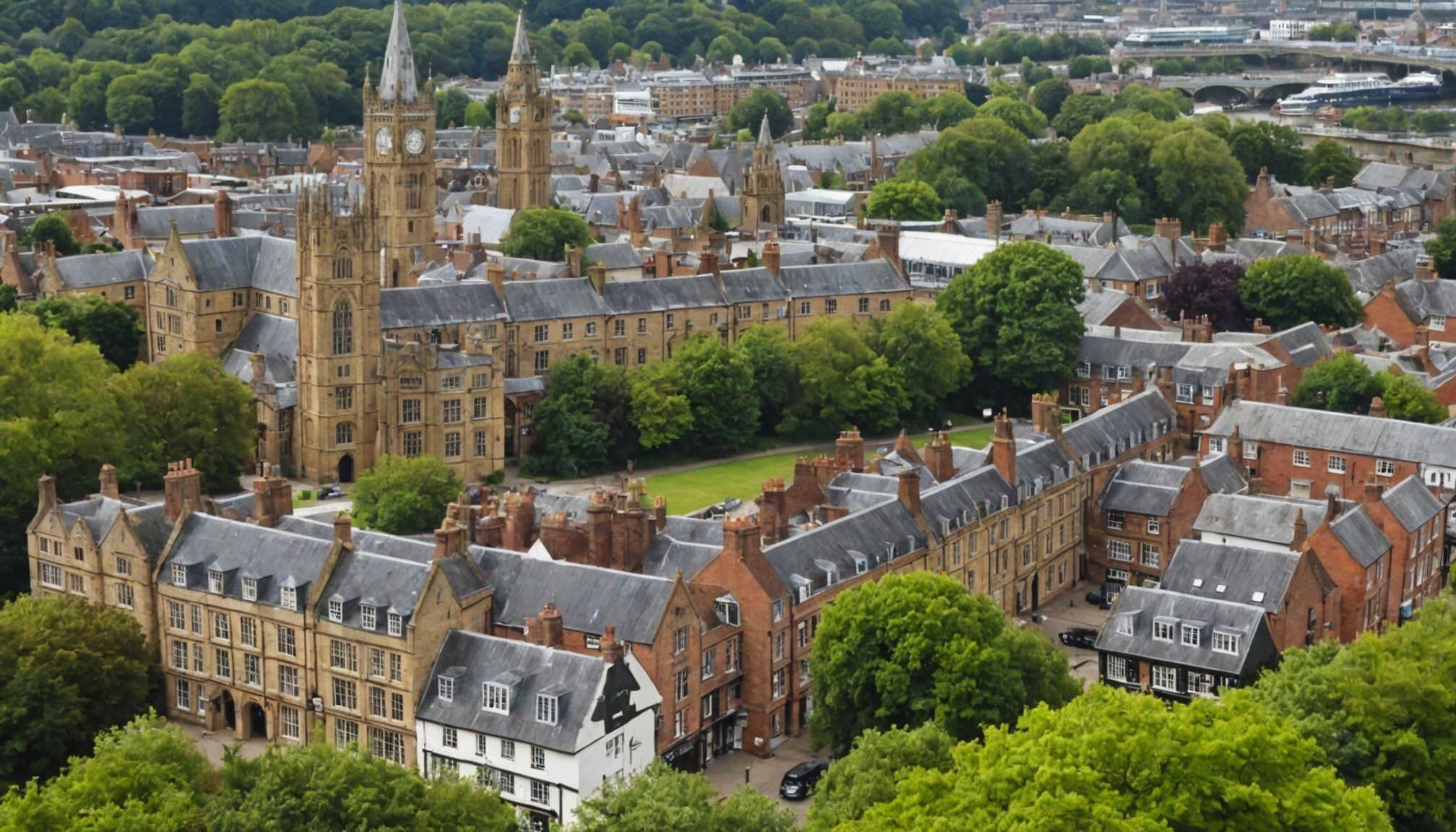Overview of Cultural Hotspots in the UK
Cultural hotspots have become pivotal zones for property investment in the UK. These areas, rich in historical and modern cultural attractions, amplify real estate values due to increased demand and economic vibrancy. The presence of theatres, museums, music venues, and art galleries enhances the desirability of neighbourhoods, attracting both investors and residents. Thus, the significance of cultural hotspots in property investment cannot be overstated.
The economic impact of cultural attractions is profound, driving up real estate values as more people seek to live in culturally enriched environments. This rise in property values benefits investors, who enjoy not only capital appreciation but also higher rental yields. Moreover, areas with a strong cultural identity often witness rejuvenation, further boosting their appeal and property values.
A lire en complément : Transforming UK Commercial Properties: Discover the Financial Advantages of Converting to Live-Work Units
Property demand trends in cultural areas typically show a steady or increasing interest. These locales attract a diverse population ranging from young professionals to retirees, all drawn by a vibrant lifestyle and convenient amenities. Thus, cultural hotspots are considered safe bets for investors seeking both stability and growth potential, as they are less likely to suffer from significant downturns compared to less prominent areas.
Manchester: A Blend of Heritage and Modernity
Manchester has long been recognized as a vibrant city, where cultural heritage and modernity coexist seamlessly. The city’s major cultural institutions, such as the Manchester Art Gallery and The Lowry, play a significant role in influencing real estate. These attractions draw locals and tourists alike, creating a demand for properties within close proximity. As these cultural landmarks attract more visitors, the surrounding areas often see an increase in property values and rental yields.
Cela peut vous intéresser : Top UK Buy-to-Let Hotspots for Investment in 2023: Discover the Best Locations and Their Unique Advantages
Urban regeneration projects offer further potential for investors. The Northern Quarter, known for its creative vibe, is undergoing exciting transformations. This district exemplifies how old industrial buildings can be reinvented into trendy apartments and business spaces, further enhancing Manchester’s property market appeal. Such projects contribute to a lively, modern urban environment, making the area more enticing for new residents and businesses.
When comparing property prices and rental yields, Manchester fares well in contrast to London. It offers more affordable options with promising rental returns. This financial advantage, bundled with its rich history and urban renewal efforts, makes Manchester a compelling option for property investment. For those seeking a combination of stability and growth in the UK property arena, Manchester presents a robust opportunity.
Edinburgh: Rich History Meets Modern Development
Edinburgh, often heralded for its historical significance, seamlessly combines tradition with modern development, enhancing its appeal in the property investment scene. The city’s thriving cultural scene, underscored by its renowned festivals such as the Edinburgh Festival Fringe, plays a pivotal role in boosting property appeal. These events attract countless visitors annually, significantly impacting both short-term rental markets and long-term property values.
Economic indicators bolster Edinburgh’s position as a lucrative investment locale. Strong employment rates and a robust tourism industry contribute to a thriving local economy, providing a stable backdrop for real estate growth. Additionally, property investment trends in Edinburgh reflect a steady appreciation in property values, yielding attractive returns for investors.
Property market analysis reveals several key districts poised for investment. Areas like New Town and Leith offer a blend of historical charm and modern amenities, luring both residents and investors. The presence of historical architecture and new developments caters to a wide demographic, from students to professionals. Exploring Edinburgh’s blend of rich history and contemporary opportunities proves advantageous for those seeking to invest in a city that promises both cultural enrichment and financial gain.
London: The Epicenter of Culture and Investment
London’s stature as a cultural hub significantly influences its property market. Iconic attractions such as the British Museum and the National Gallery elevate property values in their vicinity. This cultural allure draws a diverse demographic seeking proximity to these attractions, thus sustaining high demand for real estate.
The London property market showcases remarkable trends and promising forecasts, underscoring its investment potential. A steady rise in property prices coupled with continuous infrastructure development makes it enticing for investors seeking long-term growth. Despite higher initial costs, strong capital appreciation and rental yields appease discerning investors.
Investment opportunities abound in emerging neighbourhoods. Areas like Peckham and Hackney are witnessing transformations driven by cultural vibrancy and modernisation. These locales provide cost-effective entry points compared to traditional upscale districts, promising substantial returns as they develop.
Forecasts suggest a continued upward trajectory in property values, fuelled by both cultural significance and robust economic growth. Aspiring buyers and seasoned investors alike are thus encouraged to consider London’s compelling blend of tradition and innovation. Exploring these opportunities proactively allows investors to harness the city’s economic prowess and cultural depth for strategic property ventures.
Bristol: Creative Hub with Growth Potential
Bristol is known for flourishing creative industries that fuel its economic growth, making the city an attractive spot for property investors. With sectors like film, design, and digital media thriving, the city not only attracts talent but also employers who invest heavily in its robust creative scene. This dynamic environment contributes to a vibrant property market where demand is consistently strong.
Recent gentrification trends in areas such as Stokes Croft and Bedminster have led to rising property values. These neighborhoods have seen a transformation driven by increased interest in urban living, artisanal businesses, and cultural diversity. Gentrification, while raising property prices, boosts the quality of life and amenities, enhancing the area’s appeal to potential homebuyers and renters.
The Bristol property market offers a solid comparative analysis of rental yields versus investment risk. While rental yields remain competitive, investors should carefully consider the balance between potential returns and the inherent risks associated with investing in a rapidly evolving urban area. Ultimately, the city’s creative vibrancy combined with methodical investment strategies can reveal substantial long-term benefits for those investing in Bristol’s property scene.
Liverpool: Cultural Renaissance and Investment Opportunities
Liverpool is experiencing a cultural renaissance, significantly influencing its investment prospects. The city’s commitment to cultural revival through initiatives like the development of Liverpool One and the revitalisation of the waterfront has transformed it into a desirable property market. These cultural attractions not only enhance the city’s appeal but also drive substantial real estate demand.
The real estate market in Liverpool is performing exceptionally well, with growth potential seen across various sectors. The city’s cultural vibrancy plays a crucial role in sustaining demand, revealing promising sentiments for investors. As more cultural institutions and events attract visitors, the surrounding areas become more lucrative for property investments, showcasing significant potential for appreciation in property values.
Key neighbourhoods such as Baltic Triangle and Ropewalks present noteworthy opportunities for property investment. These areas are reaping the benefits of cultural revival, transforming into hotspots for both residential and commercial developments. Investors looking to capitalise on Liverpool’s cultural landscape should consider these locations, as they highlight how cultural significance can translate into tangible financial returns. With the city’s continued economic growth trajectory and strategic initiatives, Liverpool presents a robust investment environment driven by its burgeoning cultural scene.
Glasgow: Emerging Hotspot for Investors
Nestled in Scotland, Glasgow is carving out a niche as a culture-driven investment destination. A hub of creativity and innovation, Glasgow boasts key cultural events like the Celtic Connections festival and Glasgow Film Festival. These events not only enrich the local culture but significantly boost the property market by attracting tourists and encouraging local spending.
Economic growth trends in Glasgow show a steady upward trajectory, supported by a strong emphasis on cultural development. This translates into rising property demand as both investors and potential residents seek to capitalise on the city’s vibrant cultural landscape. Property demand is driven by an influx of young professionals and creative talents attracted to the lively city atmosphere.
Investors will find promising opportunities by focusing on the cultural sector in Glasgow. Areas around the West End and Finnieston are particularly appealing, with ongoing developments designed to enhance both residential and commercial real estate prospects. The combination of robust economic growth and dynamic cultural offerings makes Glasgow an attractive site for property investment. For those eyeing opportunities in culture-driven markets, Glasgow stands out as a burgeoning influencer in the UK property landscape.
Conclusion: Making Informed Investment Decisions
Investing in the UK property market requires understanding the role of cultural hotspots in shaping property values. Cultural impact is a key factor in elevating real estate desirability, compelling investors to recognize how attractions like theatres and festivals enhance property appeal. UK property investment strategies should focus on these cultural elements, considering how they contribute to community vibrancy and attract diverse demographics.
To assess investment viability in these areas, investors need to conduct thorough market research and utilize expert advice. Evaluating economic indicators linked to cultural activities can forecast growth and ensure robust returns. Recognizing cultural significance not only helps in choosing promising locations but also aligns investments with areas displaying historical identity or undergoing modernization, providing a nuanced investment perspective.
Successful investments often hinge on strategic timing and identifying areas with untapped potential. High investment analysis fosters informed decision-making; therefore, understanding cultural impacts and demand trends is vital. Implementing a strategy that evaluates cultural factors and engages in proactive location research allows investors to navigate the dynamic UK property market confidently. Emphasizing cultural attributes and economic indicators affords a tactical approach, marrying cultural insight with property acumen to optimize investment outcomes.











